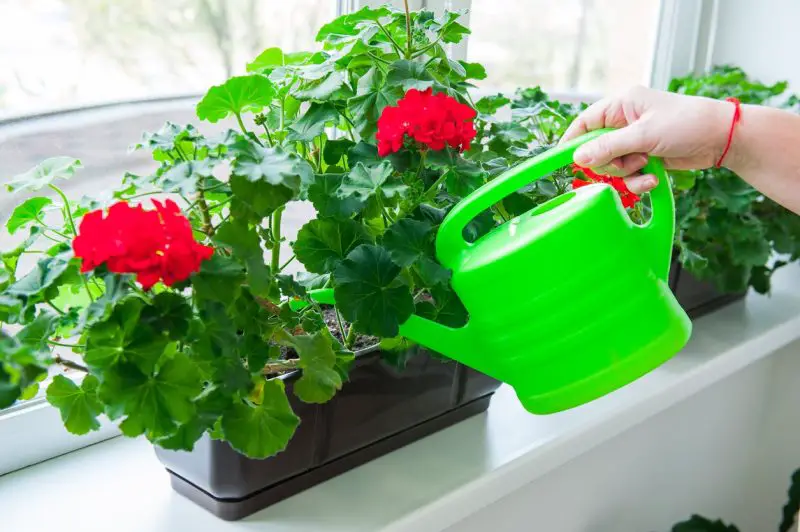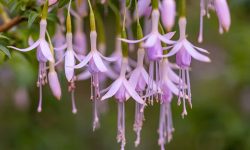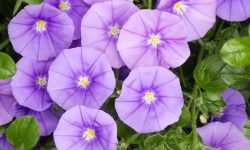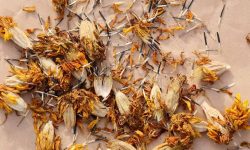Geraniums are beloved by gardeners worldwide for their vibrant colors, fragrant leaves, and easy-going nature. Whether planted in garden beds, containers, or hanging baskets, these versatile plants can brighten any space. However, one key to their success lies in understanding how to water them properly. Getting the watering routine right helps geraniums grow healthy, produce abundant blooms, and avoid common problems like root rot or wilting.
In this expert guide, we’ll dive deep into everything you need to know about how often to water geraniums. From recognizing signs of thirst or stress to adjusting watering schedules by season and environment, you’ll gain practical tips and proven strategies to keep your geraniums thriving all year round. Whether you’re a beginner or an experienced gardener, mastering geranium watering is sure to bring your plants to their full flowering glory.
Understanding Geranium Water Needs

What Makes Geraniums Unique in Their Water Requirements?
Geraniums stand out because of their ability to balance moisture storage and water sensitivity. Their thick, fleshy leaves act as natural reservoirs, allowing the plant to withstand short periods without water. This feature makes them more drought-tolerant than many other flowering plants. However, this advantage also means geraniums are prone to root rot if the soil remains wet for too long. Excess moisture suffocates roots and invites fungal diseases, so it’s essential to find the right watering balance to keep the soil moist but well-drained.
How Geranium Types Affect Watering
Water needs can vary based on the geranium variety you grow. Zonal geraniums, which have sturdy, upright growth, typically do well with moderate watering—enough to keep the soil slightly moist but never soggy. Ivy geraniums have trailing stems and thinner leaves, so they often require more frequent watering to support their continuous growth and prevent leaf drop. Scented-leaf geraniums, prized more for their aromatic foliage than flowers, tend to thrive with less frequent watering, as too much moisture can dilute their fragrance and cause leaf problems. Identifying your geranium type helps customize watering to suit its specific needs, promoting healthier growth and more vibrant blooms.
Factors Influencing How Often to Water Geraniums
Climate and Seasonal Changes
Climate is one of the most critical factors affecting how often you need to water geraniums. In regions with hot, dry summers, the rate of evaporation and plant transpiration increases significantly. This means geraniums can quickly lose moisture through their leaves and dry out faster, requiring more frequent watering—sometimes daily during peak heat waves. Conversely, in cooler or more humid climates, the air retains more moisture, and soil tends to stay damp longer. This slows down water loss, allowing you to water less often without risking dehydration. Seasonal shifts also play a significant role. Geraniums enter a period of active growth and bloom during spring and summer, during which their water demand peaks to support vigorous leaf and flower production. In autumn and winter, as growth slows and plants enter dormancy, their water requirements drop substantially. During these cooler months, overwatering can be particularly harmful, leading to root rot or fungal infections. Therefore, adjusting your watering schedule with the changing seasons is essential for keeping your geraniums healthy year-round.
Soil Type and Drainage
The soil in which your geraniums grow dramatically impacts watering frequency and overall plant health. Geraniums prefer well-draining soils because standing water or overly moist conditions can suffocate roots and invite root rot. Sandy soils, for example, drain very quickly because their large particles create ample air pockets. This fast drainage means water doesn’t linger around roots for long, forcing you to water more often to keep plants hydrated. Loamy soils strike a better balance by retaining moisture yet providing good aeration, so they generally require moderate watering intervals. In contrast, clay-heavy soils hold water tightly due to their fine particles and poor drainage. While this might mean less frequent watering, it also increases the risk of waterlogging and root diseases if excess water isn’t managed properly. Testing your soil’s drainage by observing how fast water percolates after watering can help you determine how often to water your geraniums. Amending soil with organic matter like compost or perlite can improve drainage and moisture retention, creating a healthier growing environment.
Container vs. Ground Planting
Geraniums grown in containers have distinctly different watering needs compared to those planted in garden beds or the ground. Containers limit root space and contain a finite amount of soil, which means the soil warms up and dries out much faster—especially in hot, sunny, or windy conditions. The exposed soil surface in pots loses moisture rapidly through evaporation, often necessitating daily or every-other-day watering during warm months. The type and size of the container also matter; smaller pots dry out faster than larger ones, and porous materials like terracotta absorb moisture from the soil, increasing water loss. On the other hand, geraniums planted directly in the ground benefit from larger soil volumes that hold moisture longer and provide better insulation for roots. Ground planting usually means you can water less frequently, as natural rainfall and deeper soil moisture help sustain the plants. However, soil type and garden location still influence watering frequency. Regularly checking soil moisture levels in both containers and garden beds is vital to avoid under- or over-watering.
Plant Size and Age
The watering needs of geraniums vary depending on their size and maturity. Young plants, seedlings, or recently propagated cuttings have smaller and less developed root systems, limiting their ability to access moisture from deeper soil layers. These young plants require more frequent but gentle watering to keep their root zones consistently moist without becoming soggy. Overwatering at this stage can be harmful, but allowing the soil to dry out completely risks stressing or killing the delicate roots. As geraniums mature and develop a more extensive root system, they become more drought-tolerant because their roots can reach deeper into the soil to access moisture reserves. Mature plants therefore need less frequent watering, but they still benefit from deep watering sessions that encourage robust root growth. Additionally, larger plants with dense foliage and heavier flowering loads may transpire more, sometimes requiring more water during peak growth periods. Adjust your watering routine based on plant age, size, and observed health to ensure optimal hydration without risking root problems.
Signs Your Geraniums Need Watering
Wilting and Leaf Drooping
Wilting or drooping leaves are among the first clear signs that your geranium is thirsty. Although geraniums are somewhat drought-tolerant due to their fleshy leaves that store moisture, they cannot endure extended dry periods without showing stress. When water is insufficient, the plant closes its stomata to reduce water loss, which limits photosynthesis and causes the leaves to lose turgor pressure. This results in limp, floppy foliage that appears lifeless and less vibrant. If underwatering continues, the leaves may become brittle and fall off. Timely watering can usually revive wilting geraniums, but prolonged neglect can cause irreversible damage to stems and roots.
Dry Soil Check
Checking the soil moisture is a simple yet effective way to decide when to water your geraniums. Insert your finger about an inch deep into the soil; if it feels dry at this level, it’s time to water. This method works well for both garden beds and container plants but is especially important for containers where moisture evaporates faster due to limited soil volume and exposure. Avoid relying solely on surface dryness, as soil can sometimes feel dry on top while still retaining moisture below. Using a moisture meter or consistent finger checks helps maintain the right balance, ensuring the roots receive enough hydration without being waterlogged.
Leaf Yellowing and Browning
Leaf discoloration is a common indicator of watering problems, but the specific pattern helps determine whether your geranium is suffering from too little or too much water. Yellowing leaves often point to root stress caused by overwatering. Excess water fills the air pockets in soil, depriving roots of oxygen and leading to root rot, which impairs nutrient uptake and causes leaves to turn yellow and drop prematurely. On the other hand, browning leaf edges typically signal dehydration. When the plant cannot take up sufficient water, leaf tips and margins dry out, become crisp, and eventually die. Sometimes, inconsistent watering—cycles of drought followed by heavy watering—can cause both yellowing and browning symptoms. Observing leaf color alongside soil moisture and plant behavior will help you adjust watering habits accurately for healthier geraniums.
Symptoms of Overwatering Geraniums
Root Rot and Fungal Diseases
Overwatering creates persistently soggy soil conditions that severely limit oxygen availability to the roots. Geranium roots require air spaces in the soil to function properly, and when these spaces are filled with water, the roots become suffocated. This lack of oxygen encourages the growth of harmful fungi and bacteria, leading to root rot. Early signs include stunted or slowed growth, wilting leaves even though the soil remains wet, and a general decline in plant vigor. As root rot progresses, roots turn brown or black, become soft and mushy, and emit a foul odor. Without intervention, the root system collapses, preventing water and nutrient uptake, which can ultimately kill the plant.
Fungal diseases such as Pythium and Phytophthora species thrive in these wet conditions. Infected plants often show symptoms of leaf yellowing, browning, and increased susceptibility to other stresses. These diseases spread quickly in poorly drained soil, so prevention and early detection are key.
Soft, Mushy Stems and Leaves
One of the most visible and alarming symptoms of overwatering is the development of soft, mushy stems and leaves. When geraniums receive excessive moisture, the plant tissues become waterlogged and lose their structural integrity. The affected stems and leaves may appear translucent, limp, or soggy to the touch. This condition often begins at the base of the plant and can spread upward if not addressed. Mushy tissues are prone to secondary infections by fungi and bacteria, accelerating decay and further weakening the plant. Immediate corrective action, such as reducing watering frequency and improving soil drainage, is essential to save the plant.
Leaf Drop and Yellowing
Leaf yellowing and premature leaf drop are common symptoms associated with overwatering. While yellow leaves can also indicate underwatering, overwatered geraniums typically have wet soil that remains saturated for long periods. This constant moisture leads to poor root function and nutrient deficiencies, causing the leaves to turn yellow and eventually fall off. The yellowing is usually uniform, starting from the lower leaves and progressing upwards.
Unlike underwatering symptoms, where leaves tend to wilt and curl, overwatering causes leaves to feel soft and limp before they drop. If the soil smells musty or sour, it is a strong indication of excess moisture and possible root problems. To address this, watering should be reduced, the soil should be allowed to dry out between waterings, and container drainage should be checked or improved to prevent standing water.
How Often to Water Geraniums: Guidelines by Season
Spring Watering Routine
Spring marks the end of dormancy and the start of active growth for geraniums. During this period, plants focus on developing new shoots, leaves, and flower buds. To support this growth without causing stress, watering should be consistent yet moderate. Generally, watering every 3 to 4 days is effective, but it’s important to check soil moisture before watering. The soil should remain evenly moist but never soggy, as excessive water can damage roots or encourage fungal diseases. Also, the frequency might vary depending on your local climate and whether the plants are grown in containers or garden beds. Containers tend to dry out faster, so potted geraniums may require more frequent watering compared to those planted in the ground.
Summer Watering Frequency
Summer is the most demanding season for geraniums in terms of water requirements. High temperatures and increased sunlight intensity cause rapid moisture loss through transpiration and soil evaporation. In hotter regions or during heatwaves, geraniums may need daily watering, especially if grown in containers that hold less soil moisture. Watering early in the morning is recommended to allow the plant to absorb moisture before the heat of the day and to reduce water loss through evaporation. This also helps dry any moisture on the foliage quickly, lowering the risk of fungal infections. During very humid or rainy summers, adjust watering to prevent overwatering by checking soil moisture levels regularly.
Fall Watering Adjustments
As temperatures begin to cool in fall, geraniums enter a slower growth phase, reducing their water needs. Watering every 5 to 7 days typically suffices during this season. Reducing the amount and frequency of watering helps prevent root rot and other moisture-related diseases, especially as nights grow cooler and soil dries more slowly. It’s best to water earlier in the day to allow the foliage and soil surface to dry before nightfall. As the plants prepare to enter dormancy, avoid heavy watering late in the day or evening to minimize excess moisture that encourages fungal growth and pest problems.
Winter Care and Watering
Winter watering routines depend largely on whether geraniums are outdoors in mild climates or kept indoors during colder months. In winter, most geraniums go dormant or semi-dormant, drastically lowering their water requirements. Watering should be significantly reduced to roughly once every 10 to 14 days. Allow the soil to dry out partially between waterings to prevent root rot caused by prolonged moisture. For indoor geraniums, maintain moderate humidity and avoid overwatering, which can be common with indoor plants during winter when evaporation slows down. Providing good drainage and ensuring the plant is not sitting in waterlogged soil are crucial steps to maintain plant health during this low-water period.
Best Practices for Watering Geraniums
Watering Techniques for Optimal Health
Watering geraniums correctly is essential to maintain plant health and prevent diseases. Always water at the base of the plant, aiming for the soil near the roots. This practice helps keep the foliage dry, significantly lowering the risk of fungal infections like powdery mildew and leaf spot, which thrive in moist leaf conditions. Use a gentle stream or a watering can with a fine spout to avoid disturbing the soil surface or washing away mulch. Deep watering encourages roots to grow deeper into the soil, which strengthens the plant’s drought tolerance and overall stability. Avoid frequent shallow watering that encourages shallow root systems. Overhead watering should generally be avoided unless necessary, such as when rinsing off dust or pests, and should always be done early in the day to allow foliage to dry quickly.
How to Adjust Watering in Containers
Geraniums grown in containers have different watering needs compared to those planted in the ground due to limited soil volume and faster moisture loss. It’s important to check the soil moisture daily during warm or dry periods, especially in summer. Stick your finger about an inch into the soil; if it feels dry, it’s time to water. When watering container geraniums, water thoroughly until excess drains from the bottom, ensuring the entire root ball is moistened. Always use pots with drainage holes to prevent water accumulation, which can lead to root rot. Elevate containers slightly using pot feet or bricks to improve air circulation beneath the pot. This prevents waterlogging and promotes healthy root environments. Adjust watering frequency seasonally, reducing it in cooler months as evaporation slows.
Using Mulch to Conserve Moisture
Applying a layer of organic mulch around geraniums is an excellent way to conserve soil moisture and improve plant health. Mulch acts as a protective barrier that slows down water evaporation from the soil surface, helping to maintain consistent moisture levels. It also moderates soil temperature by insulating roots from extreme heat or cold, reducing plant stress. Additionally, mulch suppresses weed growth by blocking sunlight to weed seeds. Since weeds compete with geraniums for water and nutrients, keeping them at bay allows your plants to thrive with less frequent watering. Popular mulching materials for geraniums include shredded bark, compost, or well-aged leaf mulch, applied in a 2 to 3-inch layer, taking care not to pile mulch directly against the stems to prevent rot.
Special Considerations for Indoor Geraniums
Indoor geraniums need different watering care than outdoor ones due to lower humidity, less air circulation, and varied light. Indoor air, especially in winter with heating, is drier, causing soil to dry faster and stressing plants. Regularly check soil moisture to avoid both drying out and overwatering.
Use pots with drainage holes and well-draining soil to prevent root rot. Water deeply but let the top inch dry between waterings. Misting around the plant can raise humidity without wetting leaves, reducing pests and keeping plants healthy.
Light is vital—place geraniums in bright, indirect light near south- or west-facing windows. Good air circulation helps prevent fungal diseases and speeds soil drying. Indoor geraniums grow slower and need less water, especially in cooler months. Watch for drooping, yellow leaves, or soft stems and adjust watering as needed to keep them thriving.
Common Watering Mistakes and How to Avoid Them
Overwatering vs. Underwatering Confusion
One of the most frequent mistakes gardeners make is confusing the symptoms of overwatering and underwatering, which can look surprisingly similar. Both conditions cause wilting, yellowing leaves, and leaf drop. However, the underlying issues differ greatly. Overwatered geraniums suffer from root oxygen deprivation, leading to root rot, while underwatered plants experience drought stress. To avoid this confusion, regularly check the soil moisture by feeling the top inch of soil. If it’s soggy or stays wet for days, hold off on watering and improve drainage. Conversely, if the soil feels dry and crumbly, it’s time to water. Observing other plant signs—like soft, mushy stems (overwatering) versus dry, brittle leaves (underwatering)—can also help you diagnose the problem accurately. Keeping a consistent watering log and adjusting based on weather conditions can further prevent these errors.
Using the Wrong Watering Schedule
Relying on a fixed watering schedule without considering the plant’s current needs and environmental factors often leads to improper watering. Geraniums don’t thrive on rigid routines because water requirements change based on temperature, humidity, soil type, and plant size. Instead of watering every “X” days automatically, check the soil moisture and observe your geranium’s condition before watering. Stick your finger into the soil or use a moisture meter to determine if watering is necessary. This approach prevents unnecessary watering, saves water, and keeps roots healthy by avoiding soggy soil. Additionally, adjusting watering frequency after rainfall or during dry spells ensures the plant receives the right amount of moisture without stress.
Ignoring Seasonal Changes
Geranium water needs fluctuate throughout the year, and ignoring these seasonal variations can harm the plant. During the active growing and blooming seasons in spring and summer, geraniums require more frequent watering to support their vigorous growth and flower production. In contrast, during fall and especially winter, the plant enters a semi-dormant state, reducing its water uptake significantly. Continuing to water at the summer rate during dormancy can cause root diseases and poor plant health. To avoid this mistake, adjust your watering schedule seasonally: water deeply but less often during cooler months and increase frequency as temperatures rise. Also, indoor geraniums often have lower water needs during winter due to slower growth and lower evaporation rates indoors, so monitor accordingly.
Troubleshooting Watering Issues for Geraniums
How to Revive Overwatered Geraniums
Overwatering is one of the most common problems with geraniums and can quickly lead to root rot and fungal infections. If you notice yellowing leaves, wilting despite moist soil, or a sour smell from the soil, it’s likely your plant is overwatered. The first step is to immediately reduce watering frequency and allow the soil to dry out. To improve drainage, consider repotting your geranium into fresh, well-draining soil mixed with perlite, coarse sand, or orchid bark to increase aeration. When repotting, carefully inspect the root system and trim away any dark, mushy, or foul-smelling roots with sterile scissors to prevent further decay. If fungal infection is present, treat the soil and plant with a suitable fungicide following label instructions. Place the plant in a bright, airy spot to help dry the soil and prevent fungal spores from spreading. Avoid fertilizing until the plant shows signs of recovery.
What to Do When Geraniums Are Underwatered
Underwatering causes dry, crispy leaves, slow growth, and wilting, especially during hot weather. To help your underwatered geranium recover, start by watering deeply, ensuring the water reaches the entire root zone. Shallow watering only wets the surface and encourages weak, shallow roots that dry out quickly. Water slowly to allow the soil to absorb moisture rather than running off. After watering, monitor the soil moisture regularly, and water consistently but only when the top inch of soil feels dry. Trim away severely damaged or browned leaves to redirect the plant’s energy toward healthy growth. You can also boost recovery by providing a balanced fertilizer to support new leaf and flower development. Ensure the plant receives sufficient indirect sunlight and avoid exposing it to extreme heat during recovery.
Preventing Recurring Watering Problems
To avoid repeated watering issues, establish a flexible yet consistent watering routine tailored to your geranium’s specific environment and growth stage. Relying solely on a calendar can be misleading, so incorporate soil moisture checks into your care regimen. Tools like moisture meters provide accurate readings and can help you determine when watering is truly necessary. Additionally, understanding your climate, container size, soil type, and seasonal changes helps adjust watering frequency appropriately. Use well-draining soil and pots with drainage holes to prevent water accumulation. Mulching around outdoor plants helps retain moisture while reducing the risk of overwatering. Finally, observe your plants daily for early signs of water stress and adjust care accordingly to maintain healthy, thriving geraniums.
FAQ About How often to Water Geraniums
How often should I water my geraniums during different seasons?
Watering frequency depends on the season and climate. In spring and summer, water every 2-4 days or when the top inch of soil feels dry. During fall and winter, reduce watering to once every 7-14 days, as growth slows down and the plant requires less moisture.
How can I tell if I am overwatering or underwatering my geraniums?
Overwatering causes yellowing leaves, soft stems, and root rot symptoms, while underwatering results in wilting, drooping leaves, and dry soil. Checking the soil moisture before watering helps prevent both issues.
What is the best way to water geraniums to avoid fungal diseases?
Water at the base of the plant using a gentle stream to keep foliage dry. Avoid overhead watering and water early in the day so the soil surface can dry before nightfall, reducing fungal risk.
How does container size affect geranium watering needs?
Smaller containers dry out faster and need more frequent watering, sometimes daily in hot weather. Larger pots retain moisture longer, requiring less frequent watering. Always check soil moisture to adjust accordingly.
Can indoor geraniums have different watering requirements than outdoor ones?
Yes, indoor geraniums often need less water due to slower growth and lower humidity. Use pots with drainage holes, water deeply but allow the top inch of soil to dry between waterings, and increase humidity by misting.
Conclusion
Watering geraniums properly is key to their vibrant growth and abundant flowering. By understanding their unique needs and adjusting for climate, soil, and season, you can avoid common pitfalls like overwatering or underwatering. Paying close attention to your plants’ signals and adapting your care routine will ensure your geraniums remain healthy, lush, and blooming beautifully year after year. With expert advice and practical tips, your geranium watering strategy can help you cultivate thriving plants that enhance your garden or home.






